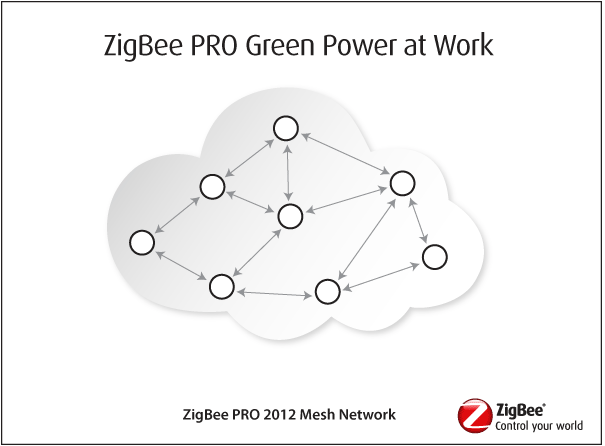This article is more than 1 year old
Tiny tech ZigBee harnesses puny power of the press
Batteries? Where we're going we don't need batteries
The ZigBee Alliance - which looks after the low-power radio comms standard - has now introduced wireless communications that are powered by the act of pressing a key.
Green Power is an extension to the Zigbee protocol that allows switches and sensors to operate from tiny amounts of power - such as the power generated by the physical act of flicking the switch, or from tiny solar cells out of direct sunshine. It offers the promise of a wireless future which doesn't shudder to a halt when the battery runs out.
Energy Harvesting, as the technique is known, isn't new, but allowing a device powered by the technique to interact with an existing mesh standard is - and this is what Zigbee Green power promises.
The standard uses a reduced-size packet - around 21 bytes compared to the usual 127 bytes allowed by the Zigbee standard. The diminutive packet can be sent several times using the power harvested by a piezoelectric* element behind a light switch, thus allowing a device to interact with the Zigbee mesh network without needing any battery or any other source of power.**
That's just for sending, and only works when the switch and the sink (the thing it controls) are within range of each other. To take advantage of Zigbee's self-forming mesh, and receive data, the Green Power element needs to have a proxy presence within the mesh to which it can connect directly.

Illustration of how the ZigBee Green Power device accesses the sink through proxies - via ZigBee.org
The proxy needs proper power, a battery at least, as Zigbee will consume 20 millijoules an hour. That's just a fraction of that consumed by competing protocols but it's still significant - the Zigbee Alliance has pretty pictures showing Wi-Fi consumption as the Eiffel tower, Zigbee as a small boy standing beside it and Green Power as the balloon he's carrying, showing how consumption compares.
Zigbee's ability to automatically mesh is marvellous, and should be a killer feature though the technology has been slow to spread thanks to interoperability hiccups and competition from the only marginally more proprietary Z-Wave standard, which can also mesh itself to extend coverage.
Devices using Energy Harvesting techniques have hitherto been limited to proprietary technologies such as those sold by EnOcean (embodied into ISO/IEC 14543-3-10), which remain incompatible with Zigbee's Green Power standard but provide another alternative for those who really hate batteries. ®
* Generating energy from pressure
** Existing radio switches use tiny batteries, like the 23A, which last a few years in daily use (in the experience of your correspondent) but can be irritating when they run out and are clearly unsuitable for mission-critical applications.
